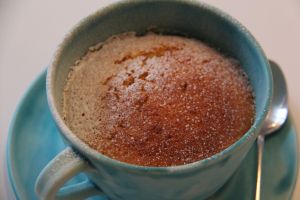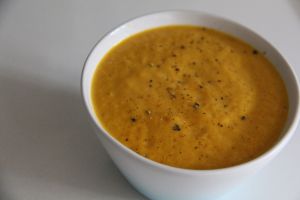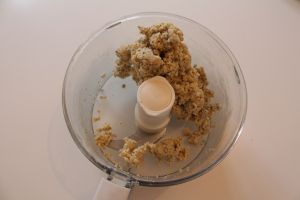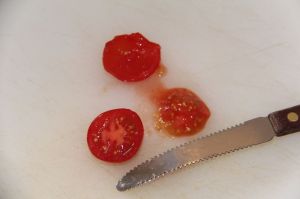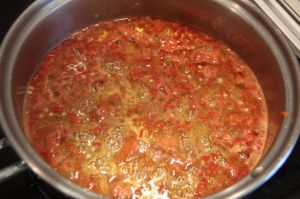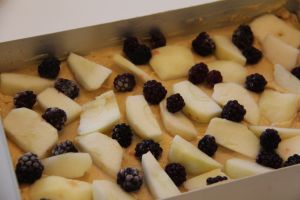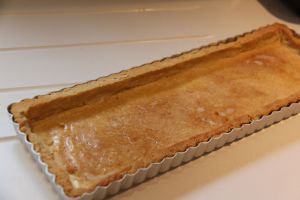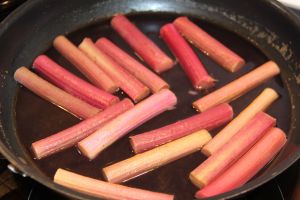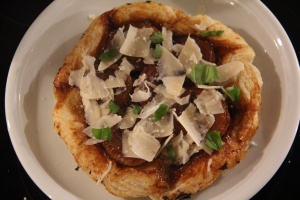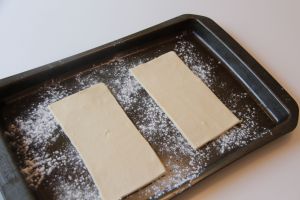Last November my husband and I celebrated our 15th wedding anniversary with a very decadent trip to the Maldives, staying at the incredible Six Senses Laamu. During the week we met and made friends with Phil and Jenny Howard. Phil is head chef at the 2 Michelin starred restaurant, The Square in Mayfair, and was out in The Maldives as a guest chef. I attended his master class (amazing squid linguine) but Chris got a touch of heat stroke (over enthusiastic turtle-chasing) which prevented us from enjoying what was no doubt a sublime meal at the Leaf restaurant that night.
As compensation he bought me Phil’s two cookbooks for Christmas, and I have been dipping my toe slowly in. Under the banner of The Square, they are, as you would expect, very ‘fine dining’, with gorgeous, if intimidating photos, and I fear that many of these beautiful books will resentfully reside on London’s glass coffee tables without ever seeing a kitchen. This is a real shame, as Phil has painstakingly and intelligently written his recipes to be cooked by everyday cooks, giving explicit directions, with ‘make or break’ tips at the beginning of each. I really welcomed this, as I have often found that it is the tiniest of things which make a difference, and recipes rarely point them out, (which makes me wonder how often they really have been tried and tested).
So, which recipe of Phil’s can I recommend? For me, this one wins hands down, and actually, the recipe is fairly straightforward as long as you have the time, and Radio 4 / Carly Simon / No Kids to keep you company. The first time I made this, I followed it to the letter, and made individual tarte tatins, with sticky caramelised rings of pineapple, spiked with tiny shards of chilli (see this review for a pic of the real thing). For the purpose of this blog post, I was a little lazier as time was short, and adapted it to make one large tarte.
I am, I admit, in the middle of a crush on limes, and its ability to add sharp enhancement to Asian dishes, and fragrant sophistication to desserts. I don’t think however, that I have ever come across lime and pineapple together (let alone with the addition of chilli) before – except maybe in a cocktail? And I love it – and am planning to devise a lime and pineapple cake, with maybe a touch of coconut? In fact, Phil asks that we present his individual tartes on a flurry of coconut powder, which alas, I did not have handy, but will endeavour to source (or make with coconut oil and Sosa maltrodextrine, as advised….) next time…
The lime ice-cream however, deserved more care, as it’s completely UNBELIEVABLE! (- the first time I have used capitals in this blog, as the trend annoys me, but necessary here to give you some idea of its fabulousness). Such a simple recipe, and delicious on its own, but with crisp butter pastry, and darkly toffeed pineapple, it is truly elevated to Michelin Star status.
INGREDIENTS – Serves 4
Puff Pastry (all butter – Anchor’s is great) – 400g
For the ice-cream
4 limes
250ml whipping cream
250ml icing sugar
For the Pineapple
1 supersweet ripe pineapple (important that it’s sweet for caramelising)
150g unsalted butter
150g caster sugar
1 red chilli
30ml white rum
METHOD
– Grate the zest from the limes as finely as possible and add to the cream and squeeze in 100ml of the juice, passed through a sieve.
– Add sugar and stir to dissolve, and if you can, leave for a few hours to infuse – preferably overnight.
– Churn in an ice-cream machine no more than two hours before serving
– Transfer to freezer
– Top and tail the pineapple
– Cut into small pieces, removing all the ‘eyes’
– Dry on kitchen roll for one hour
– Roll out the puff pastry into a round to fit a 20cm cast iron pan (2mm thick) and leave to rest
– Add butter and sugar to the pan and cook over a medium heat until you have a rich caramel
– Add the pineapple and cook until they are a rich hazlenut brown.
– Finely slice the chilli and add along with the rum and mix in.
– place the pastry over the pan and tuck in the sides
– put the whole pan in the oven on 180 degrees for 15 minutes until the pastry is golden and crisp.
– Turn out, slice up and serve with the lime ice-cream.
I only wish I had photographed the full Phil version, as it does look way more glamorous, with its flouncy skirt of crisp pastry accessorised with caramel swirls, but it tastes just as good, I promise!
Sent from my iPad















